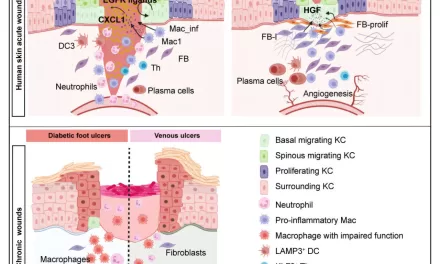
In Professor Nicholas Tonks’ laboratory, a groundbreaking discovery has been made. They have identified an antibody with the potential to suppress an enzyme associated with the spread of certain breast tumors. This discovery holds promise for the development of a viable therapeutic treatment for breast cancer.
The newly identified antibody specifically targets PTPRD, an enzyme that is found to be overexpressed in certain types of breast tumors. PTPRD belongs to the protein tyrosine phosphatase (PTP) family, a group of molecules crucial for regulating various cellular functions. They work in tandem with enzymes called kinases to govern the behavior of other proteins within cells. Kinases, in turn, add small chemical regulators known as phosphates to proteins, while PTPs remove them.
Alterations in the addition or removal of phosphates can contribute to conditions like inflammation, diabetes, and cancer. Some of these disruptions can be addressed with drugs that block kinases. However, despite significant efforts over the past few decades, targeting kinases in cancer treatment still poses challenges, including the development of resistance over time.
Controlling PTP activity through drugs could have a profound impact on human health, but creating such drugs has proven to be a complex task. Professor Tonks, who has been studying PTPs since discovering them during his postdoctoral research, refers to these enzymes as an “untapped resource for drug development.”
While many enzymes can be deactivated using small molecules designed to block the part of the enzyme responsible for its function, this approach is not effective for PTPs like PTPRD. Thus, alternative strategies are required.
To inhibit PTPRD activity, graduate student Zhe Qian devised a unique type of PTP blocker. He targeted the enzyme with a synthetic antibody—a molecule designed to recognize and bind to its target in a specific manner.
PTPRD molecules are situated in the outer membranes of cells, with portions extending both inside and outside. Qian engineered his antibody to simultaneously latch onto two PTPRD molecules from outside the cell. He and his colleagues in the Tonks lab demonstrated that when the antibody binds to its target, it brings pairs of PTPRD proteins together into an inactive configuration. This not only halts the function of PTPRD but also leads to the protein’s degradation. The team has observed that following this process, breast cancer cells cultured in the lab exhibit reduced invasiveness.reast











